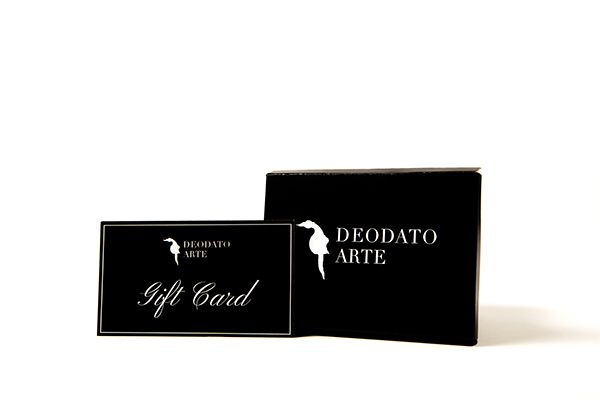- Home
- Artists
- Alex Katz
- Andy Warhol
- Angelo Accardi
- Arman
- Arnaud Nazare-Aga
- Banksy
- Bearbrick
- Bernard Aubertin
- Christo
- Damien Hirst
- Daniele Fortuna
- David Kracov
- David LaChapelle
- Dorit Levinstein
- Felipe Cardena
- Georges Braque
- Giosetta Fioroni
- Helmut Newton
- Henri Matisse
- iClim
- Invader
- James Rosenquist
- Jean-Michel Basquiat
- Jeff Koons
- Joan Miró
- José Molina
- Kaws
- Keith Haring
- Kenny Scharf
- Liu Bolin
- Lucio Fontana
- Marc Chagall
- Marco Glaviano
- Marco Lodola
- Mark Kostabi
- Maxime Siau
- Miaz Brothers
- Mimmo Rotella
- Mr. Brainwash
- Mr. Savethewall
- Obey
- Orticanoodles
- Pablo Picasso
- Richard Orlinski
- Riva Boutique
- Robert Indiana
- Roy Lichtenstein
- Romero Britto
- Salvador Dalì
- Stik
- Takashi Murakami
- Tomoko Nagao
- Tvboy
- Yayoi Kusama
- ...other artists
- Athos Faccincani
- Carlo Massimo Franchi
- Davide Nido
- Franco Costalonga
- Francesco Musante
- Giampaolo Talani
- Giovanna Fra
- Giuliano Grittini
- Giuseppe Chiari
- Hiroyuki Takahashi
- Hitomi Maehashi
- Lido Bettarini
- Manolo Valdés
- Manuela Manes
- Matteo Guarnaccia
- Maurizio Galimberti
- Mimmo Paladino
- Salvatore Emblema
- Sam Francis
- Ugo Nespolo
- Xiaogang Zhang
- Gift Shop
- META VR
- BLOG
- ABOUT
- BUSINESS B2B
- Artists
- Alex Katz
- Andy Warhol
- Angelo Accardi
- Arman
- Arnaud Nazare-Aga
- Banksy
- Bearbrick
- Bernard Aubertin
- Christo
- Damien Hirst
- Daniele Fortuna
- David Kracov
- David LaChapelle
- Dorit Levinstein
- Felipe Cardena
- Georges Braque
- Giosetta Fioroni
- Helmut Newton
- Henri Matisse
- iClim
- Invader
- James Rosenquist
- Jean-Michel Basquiat
- Jeff Koons
- Joan Miró
- José Molina
- Kaws
- Keith Haring
- Kenny Scharf
- Liu Bolin
- Lucio Fontana
- Marc Chagall
- Marco Glaviano
- Marco Lodola
- Mark Kostabi
- Maxime Siau
- Miaz Brothers
- Mimmo Rotella
- Mr. Brainwash
- Mr. Savethewall
- Obey
- Orticanoodles
- Pablo Picasso
- Richard Orlinski
- Riva Boutique
- Robert Indiana
- Roy Lichtenstein
- Romero Britto
- Salvador Dalì
- Stik
- Takashi Murakami
- Tomoko Nagao
- Tvboy
- Yayoi Kusama
- ...other artists
- Athos Faccincani
- Carlo Massimo Franchi
- Davide Nido
- Franco Costalonga
- Francesco Musante
- Giampaolo Talani
- Giovanna Fra
- Giuliano Grittini
- Giuseppe Chiari
- Hiroyuki Takahashi
- Hitomi Maehashi
- Lido Bettarini
- Manolo Valdés
- Manuela Manes
- Matteo Guarnaccia
- Maurizio Galimberti
- Mimmo Paladino
- Salvatore Emblema
- Sam Francis
- Ugo Nespolo
- Xiaogang Zhang
- Gift Shop
Register
Wishlist
Contact Us
- META VR
- BLOG
- ABOUT
- BUSINESS B2B

Delivery time in Italy is 5 days, while delivery time to receive your gift in other European and non-European countries is 3 weeks from the time of order.
Delivery on demand is always available.
*Promo valid while supplies last

Thank you!

ORARI DI APERTURA
|MAPPA
- Home
- Artists
- Pablo Picasso
- Hand-signed Works
- The old king

The old king
| Artist: Pablo Picasso | Width: 56,4 cm |
| Support: Paper | Height: 76,7 cm |
VAT included
Products with VAT included show a price calculated with VAT tax, so the additional tax of 22% is already added to the price of these products.
VAT Margin
The products with VAT Margin apply the additional tax of 22% only on the margin, the difference between the price at which the product is purchased and the price at which the same product is resold.
THE ARTWORK
Pablo Picasso - The old king
The old king is a limited edition work of 200 exemplars by Pablo Picasso. The work was made in 1959 and it measures 76,7x56,4 cm.
The work The old king is part of an extensive collection of fine art graphics, made with different engraving techniques. This type of work has accompanied the entire artistic career of the father of cubism, with a production counting more than 2,400 copies.
Thanks to these techniques, Picasso could experiment with various themes, subjects, and styles, using different methods, such as etching, lithography, and linocut.
The old king is a litograph on Vélin d'Arches paper, hand-signed and numbered.
Pablo Picasso, The old king: Prices and Value
If you are interested in the work by Pablo Picasso, The old king and you wish to know the price, click "SHOW PRICE" to receive it by email shortly.
Do not hesitate to contact us for more information about the artist and his works on sale.
Join the wonders of art thanks to our website's wide selection of works.
ADDITIONAL INFORMATION
Pablo Picasso - The old king - Lithograph on Paper - Limited Edition of 200 - Hand-signed and Numbered
| SKU | PICP-121023-06 |
| Technique | Lithograph |
| Edition | Limited Edition of 200 |
| Support | Paper |
| Width | 56,4 cm |
| Height | 76,7 cm |
| Year | 1959 |
| Notes | Hand-signed and numbered |
ARTIST: PABLO PICASSO
Pablo Picasso - biography of the artist
Pablo Picasso (whose full name is Pablo Diego José Francisco de Paula Juan Nepomuceno María de los Remedios Cipriano de la Santísima Trinidad Martyr Patricio Clito Ruíz y Picasso) was born in Malaga in 1881 and was one of the great protagonists of the art scene of the twentieth century. His works, in continuous renewal because of biographical events and experiments of the artist, have given a strong stimulus to the revolution of aesthetic and formal principles of art. Pablo Picasso art works have also deeply influenced the future generations of artists.
Pablo Picasso’s career began at a very young age and under the academic training of his father. Picasso early work consisted of making portraits of relatives and friends, he was considered a child prodigy.
Pablo Picasso: early work and style
Pablo Picasso, early work and style will characterize the entire twentieth century, represents a pioneer artist, who will contribute to the artistic scene development of those years. In Picasso, works and art are represented as a turning point of cultural enrichment of the period.
Picasso paintings style is characterized by a continuous study and experimentation of the main styles of contemporary painting. The works of Picasso, in fact, never remained the same throughout his career, marked also by the many emotional impulses that characterized the life of Pablo Picasso.
In the various stages of his style, Picasso always wanted to tell in detail the nuances of the most intimate and profound events of his life.
The constant transformation of his style is a clear sign of the brilliance of the Spanish artist.
Pablo Picasso - Blue Period
Picasso Blue Period is characterized by the sadness and melancholy caused by the suicide of his friend Carlos Casagemas, with whom Picasso had shared travels and years of bohemian life.
Elongated figures and the use of color with a prevalence of shades of blue are feature of the Blue Period: Picasso melted together the reflection of his emotions in this period of sadness.
The subjects and themes of Picasso Blue Period are oriented to explore the condition of misery and loneliness of the human being in the contemporary era. Characters such as poors, beggars and circus personalities with sad and melancholic looks will be the protagonists in Picasso's works.
Picasso paintings of the Blue Period have a sense of sadness and loneliness in common.
Pablo Picasso - Rose Period
Picasso Rose Period is characterized by the moving of the artist to Paris, where he fell in love with Fernande Olivier, a French model and writer.
The serenity, determined by the new love and new encounters, puts in the artist a new existential condition that will lead him to abandon the dark tones of the Blue Period, beginning to explore various shades of pink.
During the Rose Period, Picasso turns his attention to the characters of the circus as harlequins, acrobats, and jugglers. The idyllic atmosphere and the shades of pink will arise a period of childish works.
Pablo Picasso, Cubism
Pablo Picasso Cubism, like the others avant-garde movements, is characterized by a pessimistic view which aimed to go beyond the visible in order to explore other possibilities of representation.
A pioneer of the artistic movement along with Georges Braque, Picasso developed the iconic style after attending exhibitions of Iberian sculptures and African art.
Picasso Cubism painting turn towards an increasing number of points of view that will break down the image in space presenting it simultaneously on the surface of the painting.
Cubism period is in turn divided into two periods: Analytical and Synthetic Cubism.
The first one, Analytical Cubism, is characterized by a marked decomposition of form. That means that in the same space and at the same time, the object is perceived as if it were captured simultaneously from several angles. The obtained result borders on abstraction, without separating from the reality and the nature of the represented object.
On the other hand, Synthetic Cubism is developed with a renewed attention to color. The style turns out to be more sensitive than the Analytical Cubism and with direct clear and understandable images, thanks to the use of collage and the recovery of fragments of reality of several elements in a synthesis.
Picasso - Les Demoiselles d'Avignon
Picasso, Les Demoiselles d'Avignon artwork, whose original title was “Bordel d'Avignon”, is one of the most revolutionary and controversial works the artist’s artistic career, started in 1907.
Pablo Picasso artwork portrayed five female bodies with sharp and angular shapes. “Les Damoiselles” all have their gaze turned towards the viewer, so that the traditional perspective, the one with a single point of view, is modified. The work has been recognized for being the first work of Cubism.
Guernica: Picasso and the rejection of war
Guernica, Picasso’s artwork, was led by the feeling of the artist after the bombardment of the city of Guernica in 1937.
The same year, Picasso, artist at the time known throughout Europe, is invited to represent his country at the International Exhibition of Arts and Techniques in Paris. And it was on this occasion that he decided to present the work.
Guernica marks a new and further turning point in Picasso's artistic career, which has always been in continuous transformation.
For the realization of the work Guernica, Pablo Picasso amazes for the chromatic choice. Picasso decides to abandon the color, symbol of life, to rely only on the dramatic force of black and white and a range of gray-blue shades. The chromatic choice of Picasso is due to the crude series of photographs of war in black and white appeared on the newspapers of the time.
The work Guernica is a "declaration of war on war", aimed to become an ideological manifesto as well as a moral condemnation of the event.
At the end of the International Exhibition, the painting was removed and moved to New York, the city where Picasso decided to keep the painting throughout the period of the Second World War. Guernica, along with other works by Picasso were kept in the Museum of Modern Art, also known as MoMA.
Guernica arrived in Spain for the first time in 1981, eight years after Picasso's death.
The work is a symbol, both for Spaniards and for all of Europe, of resistance to Nazism.
Picasso after Cubism
For Picasso, war and wartime tragedies mark the conclusion of a mostly optimistic artistic period. The artist has the need to return to look at the art of the past. The new works by Picasso are thus characterized by a return to the classical and a recovery of a formal overview.
Critics identify this further transformation of the artist Pablo Picasso as the Mediterranean Years, a period characterized by a timeless atmosphere.
Pablo Picasso died in 1973 in Mougins retired in exile after the seizure of power by General Francisco Franco in Spain.
Picasso: works for sale with prices and value by Deodato arte
For those who are interested in Pablo Picasso painting price, Deodato Arte offers a selection of the artist's works for sale online.
If you are interested in knowing Picasso price, value or which works will be on display at Deodato Arte Contemporary Art Gallery, do not hesitate to contact us by sending an e-mail to [email protected].
SHIPMENT DETAILS
The artwork is delicate and requires a custom-made wooden box to protect it during transportation. Delivery to EU countries takes 1 to 3 weeks from the time of order.
For deliveries outside the EU there may be a clearance delay at customs. Contact [email protected] to receive an estimate of possible customs delays.
The shipping cost is calculated before payment. The cost of the box and packaging is included in the shipping cost.
For more information, please visit our Shipping Methods, Returns and Refunds page.
HD IMAGE
By registering you can download a template of the certificate of authenticity and/or HD image. Register and make the page reload.
REGISTER OR LOGINHOW TO BUY
We are happy that you decided to buy an artwork. We'll explain how to do it, but always remember that you can also buy via email ([email protected]), by phone (+39 02.80886294) or by physically coming to one of our galleries.
PRICE
If the price is visible in the product fiche you can click "ADD TO CART" and proceed autonomously choosing later how to pay and how you like shipping (or pick-up it in one of our store).
If the price is not visible, you must press the "SHOW PRICE" button, so you will receive an email with the price and a button, "DON'T LOOSE IT, BUY NOW": if the price is right for you click on this button and you will be sent back to the site to complete the purchase.
TAX
if you LIVE IN EU
If you live in Europe (CEE) the price we show you already includes taxes. The works are taxed either with VAT exposed (22%) or VAT with the margin, if you are a private person you do not change anything, if you are a company: in In the first case, you will recover the VAT, in the second, no. When you put the works in the cart you will be separated from the vat exposed.
If you DON'T LIVE IN EU and you want an EXTRA EU shipping
Many works (not all) have an exposed VAT of 22% included in the price, this vat will be spun off! Obviously you will pay the VAT to your destination country, if due. For example if you live in Switzerland you save 22% but you will have to pay 8.1% to your customs, if you live in Hong Kong you will save 22% and you will not have to pay anything to your customs (lucky you).
SHIPPING
Shipments are insured, check the product fiche for more information, or write to [email protected]. For works in stock the delivery time for Italy is three working days, before placing your order please contact us via email ([email protected]) or by phone (+39 02.80886294) to check availability.
PAYMENT
If you complete the purchase on the site you can use a credit card, or you can make a bank transfer. Payment in cash is accepted up to 5,000 euros physically in one of our stores. Payments in BitCoin or cryptocurrencies are NOT accepted.
- Mr. Savethewall My heart - Poster£12.24 VAT included
VAT included
Products with VAT included show a price calculated with VAT tax, so the additional tax of 22% is already added to the price of these products.
VAT Margin
The products with VAT Margin apply the additional tax of 22% only on the margin, the difference between the price at which the product is purchased and the price at which the same product is resold.










 Register
Register Wishlist
Wishlist Contact Us
Contact Us










